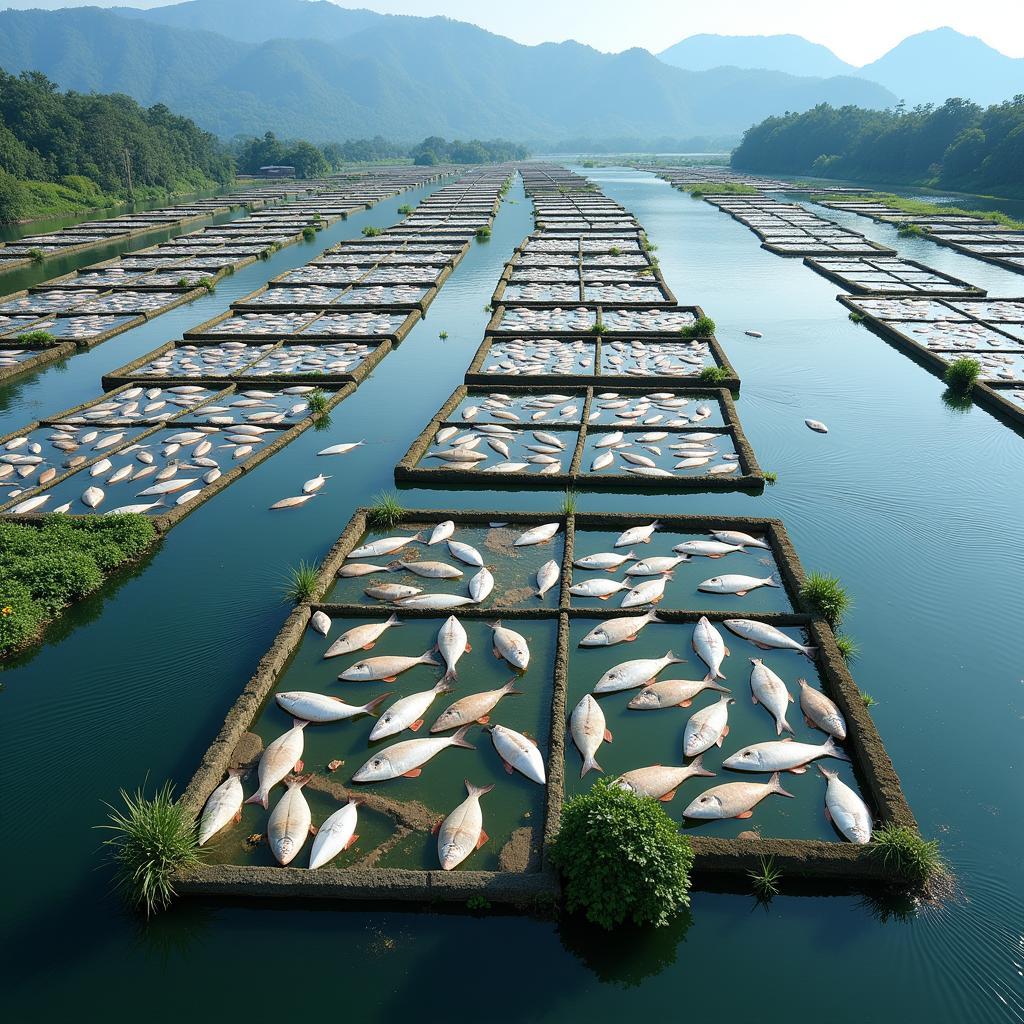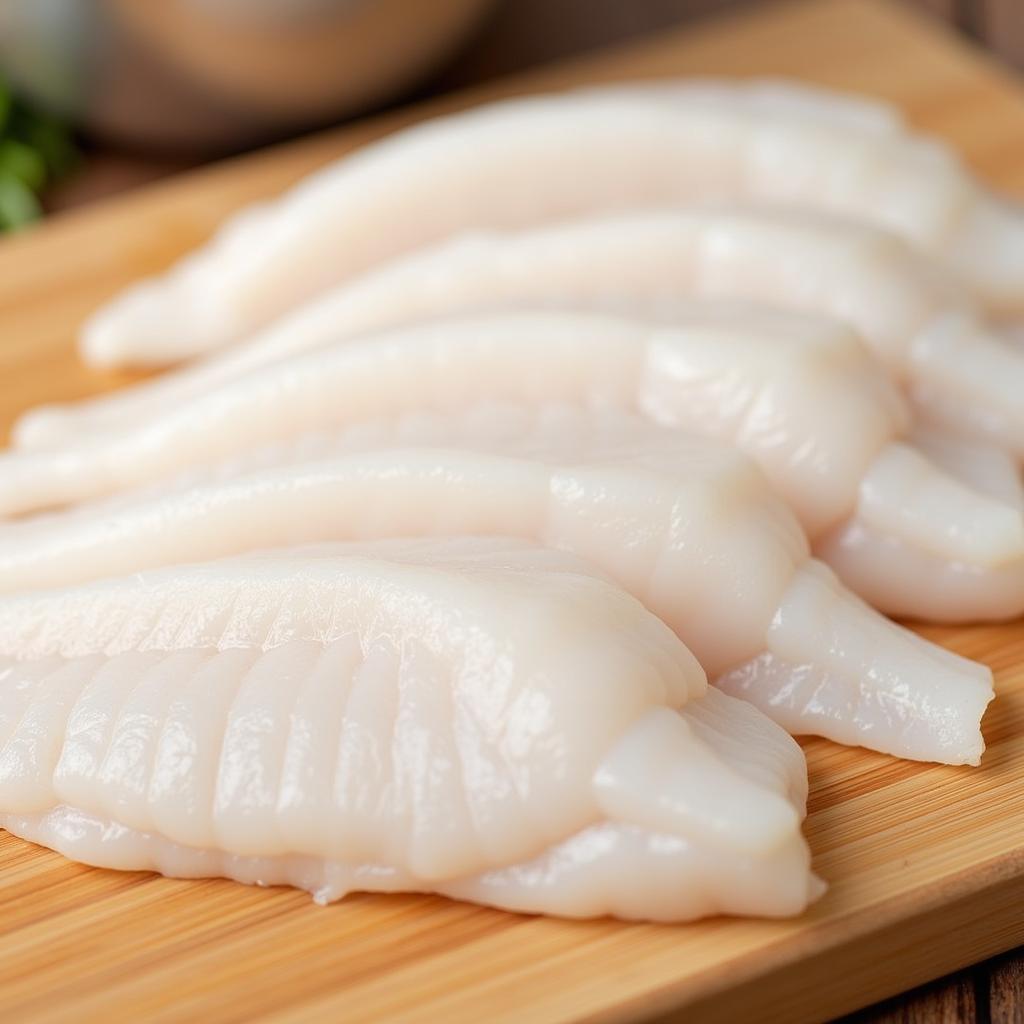African Catfish vs Pangasius: Spotting the Difference and Making the Right Choice
African catfish and Pangasius often share the same aisle in supermarkets, leading to confusion for consumers. Although they look similar and are both freshwater fish, their origins, taste, and nutritional profiles differ. Understanding these differences can help you make an informed choice that best suits your palate and dietary needs.
Delving into the Depths: Origin and Characteristics
African Catfish: A True Native Son
As the name suggests, the African catfish (Clarias gariepinus) is native to Africa. It thrives in various freshwater habitats, from rivers and lakes to swamps and floodplains, demonstrating remarkable adaptability. This hardiness makes them a popular choice for aquaculture across the continent.
African catfish are easily identified by their:
- Elongated, scaleless bodies: This gives them a slippery, almost eel-like appearance.
- Eight barbels: Four pairs of whisker-like sensory organs around their mouths help them locate food in murky waters.
- Flattened heads: This distinctive feature contributes to their unique look.
Pangasius: A Mekong River Denizen
 Pangasius farming in Vietnam
Pangasius farming in Vietnam
Pangasius, also known as basa or swai, hails from Southeast Asia. Specifically, they are native to the Mekong River basin, spanning countries like Vietnam, Thailand, and Cambodia. They are an integral part of local cuisines and are widely farmed in these regions.
Key features of Pangasius include:
- Torpedo-shaped bodies: This streamlined shape aids their movement in flowing waters.
- Two barbels: Unlike the African catfish, Pangasius have only two barbels on their lower jaw.
- Forked tails: This characteristic is more pronounced in Pangasius compared to the rounded tail of the African catfish.
A Taste of Distinction: Flavor Profiles and Culinary Uses
African Catfish: Earthy and Versatile
African catfish possesses a mild, slightly sweet flavor with earthy undertones. It is often described as having a more pronounced “fishy” taste compared to the milder Pangasius. This distinct taste makes it suitable for various cooking methods, including:
- Grilling: The firm texture of African catfish holds up well to grilling, imparting a smoky flavor.
- Frying: A popular choice in many African countries, frying highlights the fish’s natural flavors.
- Stewing: African catfish adds depth to stews and soups, especially when combined with aromatic spices and vegetables.
“African catfish is a staple in my family’s kitchen,” says Chef Amina Diallo, a renowned chef specializing in West African cuisine. “Its versatility allows me to create both traditional dishes and modern interpretations.”
Pangasius: Delicate and Adaptable
 Pangasius fish fillets prepared for cooking
Pangasius fish fillets prepared for cooking
Pangasius offers a milder, cleaner taste often compared to cod or tilapia. Its delicate flavor makes it incredibly versatile and suitable for a wide range of recipes, such as:
- Baking: Baking Pangasius with herbs and lemon results in a light and flavorful meal.
- Pan-frying: A quick and easy cooking method that preserves the fish’s delicate texture.
- Currying: Pangasius readily absorbs the flavors of curries, making it a popular choice in Southeast Asian cuisine.
“The mild taste of Pangasius is like a blank canvas for culinary creativity,” says Chef Somchai, a celebrated chef from Thailand. “It allows the other ingredients to shine.”
Nutritional Nuggets: Comparing the Benefits
Both African catfish and Pangasius are nutritious protein sources and offer several health benefits.
African Catfish: Rich in Omega-3s
- High in protein: Essential for building and repairing tissues.
- Rich in omega-3 fatty acids: These healthy fats are beneficial for heart and brain health.
- Good source of vitamins and minerals: Including vitamin D, vitamin B12, and selenium.
Pangasius: Lean and Low in Calories
- Low in calories and fat: A good option for those watching their weight.
- Good source of protein: Contributes to muscle growth and maintenance.
- Rich in selenium: An essential mineral that acts as an antioxidant.
“Choosing fish for a healthy diet is always a good idea,” says Dr. Anya Okoye, a registered dietitian. “Both African catfish and Pangasius provide essential nutrients, but consider your specific dietary needs and preferences when making your selection.”
Making the Right Choice: Your Culinary Compass
Ultimately, the best choice between African catfish and Pangasius depends on your personal preference and the intended use.
- For a richer, more robust flavor: Choose African catfish.
- For a milder, more neutral flavor: Opt for Pangasius.
Consider factors like the recipe you are preparing, your dietary needs, and the sustainability of the fish source. By making informed decisions, you can enjoy delicious and nutritious meals while supporting responsible aquaculture practices.
